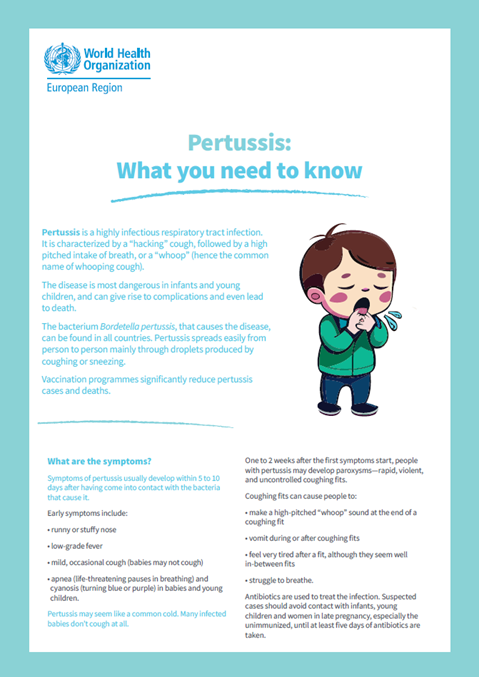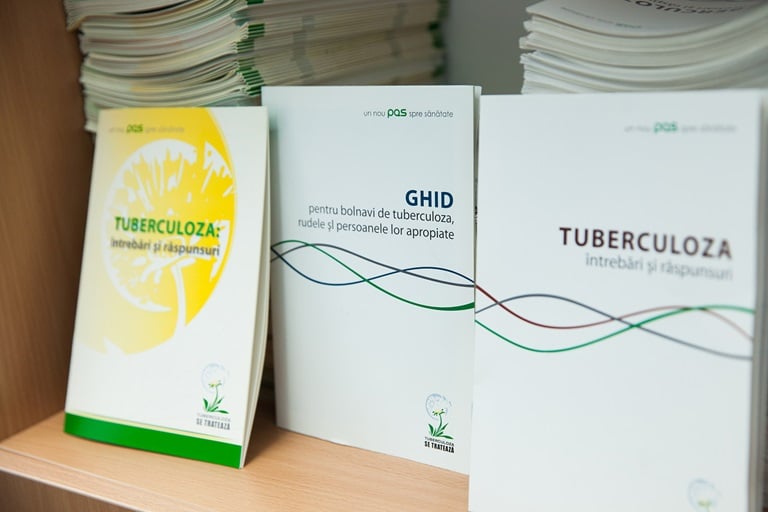Pertussis: What you need to know

Overview
Pertussis is a highly infectious respiratory tract infection. It is characterized by a “hacking” cough, followed by a high pitched intake of breath, or a “whoop” (hence the common name of whooping cough).
The disease is most dangerous in infants and young children, and can give rise to complications and even lead to death.
The bacterium Bordetella pertussis, that causes the disease, can be found in all countries. Pertussis spreads easily from person to person mainly through droplets produced by coughing or sneezing.
Vaccination programmes significantly reduce pertussis cases and deaths.






